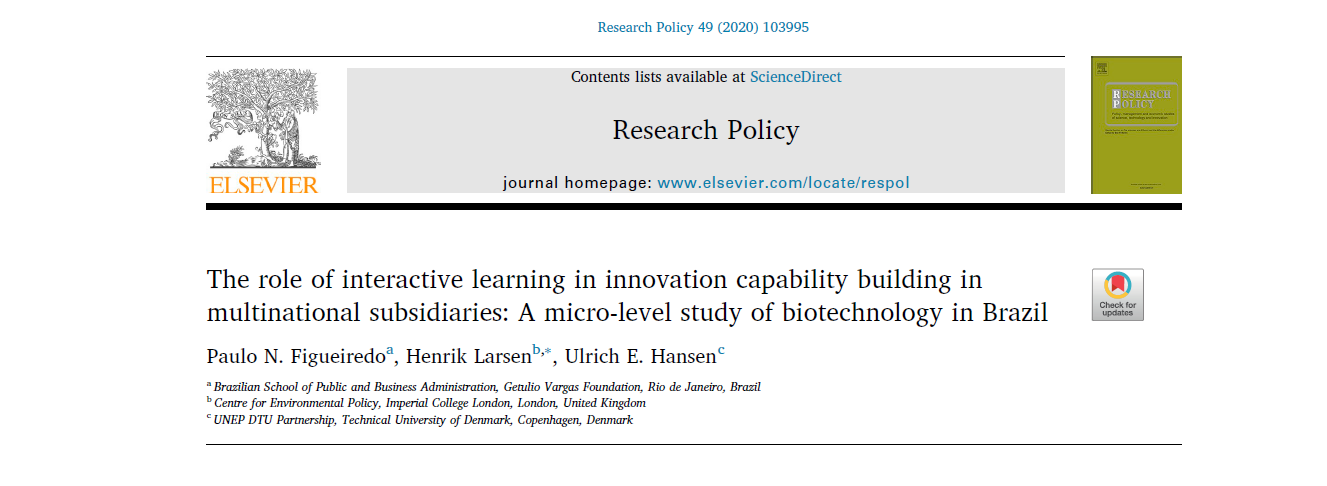
Although multinational enterprises (MNEs) from advanced economies have increasingly internationalised their innovation activities, including R&D, into emerging economies, we have an incomplete understanding of how subsidiaries in these contexts create the technological capabilities to innovate. Based on a single-case qualitative study of a Brazilian subsidiary of a large biotechnology MNE (1989-2016), we found that: (1) the subsidiary’s technological capability-building, from production-based to advanced levels (including R&D for applied research), reflects the effectiveness with which it implemented interactive learning strategies through the use of ‘science, technology and innovation’ (STI) and ‘doing, using and interacting’ (DUI) learning mechanisms to tap into three types of knowledge sources: within the subsidiary, the MNE corporate network, and other host sectoral system organisations; (2) the effectiveness of these strategies related to the combined and complementary use of various STI/DUI learning mechanisms over time, which supported the technological capability-building process and, ultimately, the implementation of innovation activities with increased value and novelty. By using a comprehensive and integrative approach to interactive learning, examining how such learning affects the subsidiary’s accumulation of innovation capability ‘levels’ and adopting a micro-level perspective in a host emerging economy, we contribute to furthering the understanding of knowledge-seeking strategies and innovation in MNE-subsidiaries, from the standpoint of biotechnology. We also provide a basis for deepening the analysis of interactive learning in subsidiaries in other industries and other emerging economies.
Figueiredo, P.N., Larsen, H., & Hansen, U.E. (2020). The role of interactive learning in innovation capability building in multinational subsidiaries: A micro-level study of biotechnology in Brazil. Research Policy, 49 (6): 103995 DOI: https://doi.org/10.1016/j.respol.2020.103995